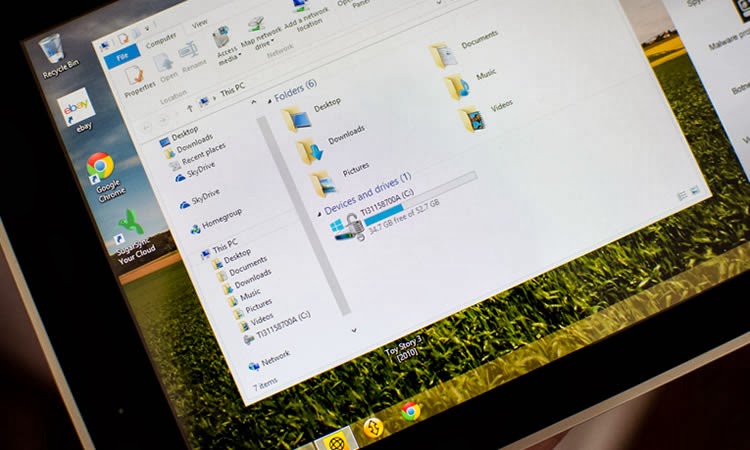 |
| Windows 8 - Toshiba Encore Tablet Review |
In this new era of technology, Eight inch tablets are hot items right now as consumers are discovering the perfect balance they often present between portability and usability. Apple’s iPad mini is an especially popular choice among people looking for a well-polished device with a fantastic selection of apps, but there are plenty of other competitors to choose from.
When it comes to 8-inch Windows tablets, the release of Windows 8.1 has seen many companies try their hands at crafting the perfect tablet. Acer was first with the mediocre Iconia W3 and shortly afterwards a ton of other devices came to the market from the likes of Dell, Asus, Lenovo and also Toshiba, whose 'Encore' tablet is the focus of today’s review.
Like a lot of small Windows tablets in the same price bracket as the Encore, specifications aren’t stellar especially in the display department: we’re looking at a 1280 x 800 panel, a resolution which Windows device manufacturers seem to love. There’s also the popular Intel Atom Z3740 SoC inside, as well as an 8-megapixel camera and 19.5 Wh battery, which makes its hardware package overall a little different to the Lenovo Miix 2 8, which we're also in the process of reviewing.
Toshibe Encore Specification
- 8.0”, 1280x720 HFFS LCD (189 ppi)
- Intel Bay Trail Z3740 SoC
- 1.3 GHz quad-core CPU, HD Graphics GPU, 2GB RAM
- 32 or 64 GB internal storage, microSD card slot
- 8 MP camera, 1/3.2” sensor, f/2.2 lens
- Wi-Fi a/b/g/n, Bluetooth 4.0, 19.5 Wh battery
- Windows 8.1 + Microsoft Office
- 445 grams, 10.7mm thick
Design
Most eight inch tablets feature some form of the standard, slightly-rounded rectangular prism design. The Toshiba Encore is no exception, although its take on the slate design is rather uninspiring.The Encore is a fairly chubby device, making no attempt to match the svelte nature of some of its competitors. Its 10.7mm thick and 445 grams heavy profile compares unfavorably to the Lenovo Miix 2 8 (at 350g and 8.35mm thick) and to the highly popular Apple iPad mini Retina (308g/7.5mm). The size doesn't just look bad on paper, the Encore feels portly in your hands and the design doesn’t try to hide it.
Display
Toshiba has gone for an 8.0-inch TFT HFFS LED-backlit LCD panel in the Encore, with a resolution of 1280 x 800. HFFS, which stands for high-transmittance fringe field switching, is an alternate display technology to IPS that offers less color shifting and similar viewing angles. It’s not a display type we often see, but Toshiba might have chosen it to keep manufacturing costs down.One area the Encore’s display really excels is viewing angles. Like an IPS panel, the Encore’s LCD is viewable at nearly all angles, however there is noticeably less color shifting and distortion. This is actually surprising considering there is a decent gap between the protective glass and panel itself, which in TN panels would significantly affect viewing angles.
Performance: Intel Bay Trail Atom Z3740
Inside the Toshiba Encore is Intel’s ‘Bay Trail’ Atom Z3740 SoC, a very popular choice among manufacturers building mid-range and entry-level Windows tablets. The very same SoC is seen in the Asus Transformer Book T100 and Lenovo Miix 2 8, so the performance from the Encore should largely be the same as these devices.CPU-wise we’re looking at four 1.33 GHz ‘Silvermont’ cores, with a Turbo Boost of 1.86 GHz when higher single-thread performance is needed. There’s an Intel Gen 7 HD Graphics GPU clocked at 667 MHz, plus a dual-channel LPDDR3 controller that’s paired with 2 GB of 1067 MHz RAM. Bluetooth 4.0 and dual-band Wi-Fi 802.11a/b/g/n make up the tablet’s connectivity; there’s no LTE/HSPA+ model available, which some users will find disappointing.
Camera
On the back of the Toshiba Encore we find a Sony IMX175 1/3.2” CMOS sensor with a resolution of 8-megapixels and an individual pixel size of 1.4 µm, paired with an f/2.2 lens. Interestingly this is the same sensor as found on some variants of the Samsung Galaxy S III, which at the time had a pretty great camera. On the front we’re looking at an Omnivision OV2722 2-megapixel 1/6” sensor, again with 1.4 µm pixels. Both cameras are capable of 1080p30 video recording.Battery Life, Wrap Up
That said, the Encore’s battery life doesn’t seem to hold as long as some of the other tablets I’ve tested recently, despite featuring similar internals. This could be due to the HFFS panel, which is a type of display seldom used on tablets, but other software and hardware choices may also be contributing factors.
Price is about $280 - $350



0 comments:
Post a Comment